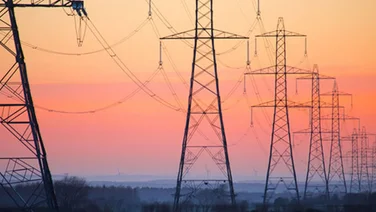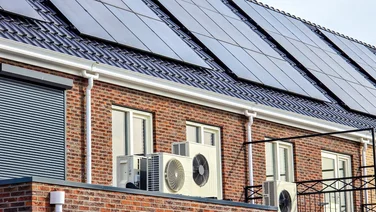- The Eastern Green Link 1 is a two gigawatt superhighway
- The cables will run for 315 miles and allow for bi-directional electricity transfer
- The project is estimated to cost £4.3bn and will help cut energy bills

The EGL 1 will begin transferring electricity by the end of 2029 – credit EGL 1
Ofgem has approved the building of a new subsea cable that will transport renewable electricity between England and Scotland, potentially bringing down electricity bills and helping to make the UK energy independent.
Developed by SP Energy Networks and National Grid Electricity Transmission, Eastern Green Link 1 (EGL1) will carry enough renewable electricity to power two million homes with the eventual capacity capable of powering 7.5 million.
The £4.3bn 2 gigawatt project is part of a strategy to modernise and increase capacity on the energy transmission network as the UK aims to make fossil fuels a thing of the past. It marks the first of four subsea electricity links planned along the east coast.
Also known as an electric ‘superhighway’, it will consist of two cables, which will run 315 miles, or 507 km, from Peterhead in Aberdeenshire to Drax in North Yorkshire. It will work in partnership with a similar link on the west coast.
According to SSEN Transmission, the energy transfer project is vital for moving electricity around the grid when wind levels are low and electricity demand is high. It guarantees that energy is delivered without reliance on nature.
Offshore construction for cable laying is due to start in 2025, with electricity transmissions possible by the end of 2029. The UK and Scottish Governments have the goal of achieving net-zero greenhouse gas emissions by 2045 in Scotland and 2050 in the UK, with EGL 1 paving the way to do so.
Claire Mack, chief executive, Scottish Renewables, said: “In the same way that we’ve exported
[oil]
from the North Sea for the past four decades and beyond, the same thing is the case with renewables.”
A new converter station is being built near Peterhead power station, where the high voltage direct current cables will start on the seabed. They will continue under water until Bridlington in East Yorkshire, where they will be buried underground and connected to the national grid.
Sepi Golzari-Munro, energy and climate commentator and strategist, said: “We’re obviously trying to have cleaner electricity from renewable sources but what this also does, crucially, is improve our energy security and will ultimately bring down bills.”
EGL 2 will connect Torness in East Lothian with Seaham in County Durham. Following the two initial projects, connections between Peterhead and Lincolnshire and between Kinghorn in Fife and Norfolk will take place.
The Eastern Green Links will work alongside the Western Green Link which runs between Hunterston in Ayrshire and the Flintshire Bridge.
The 240 mile Western Green Link was opened in 2017 and transmitted over 23,000 GWh of green energy within the first five years of opening.
Project director Ricky Saez describes Ofgem’s decision to give the superhighway the go-ahead as a “major milestone”.
Scotland is a net-exporter of electricity so despite the cables being bi-directional, the majority of electricity will come from north of the border in Scotland.







